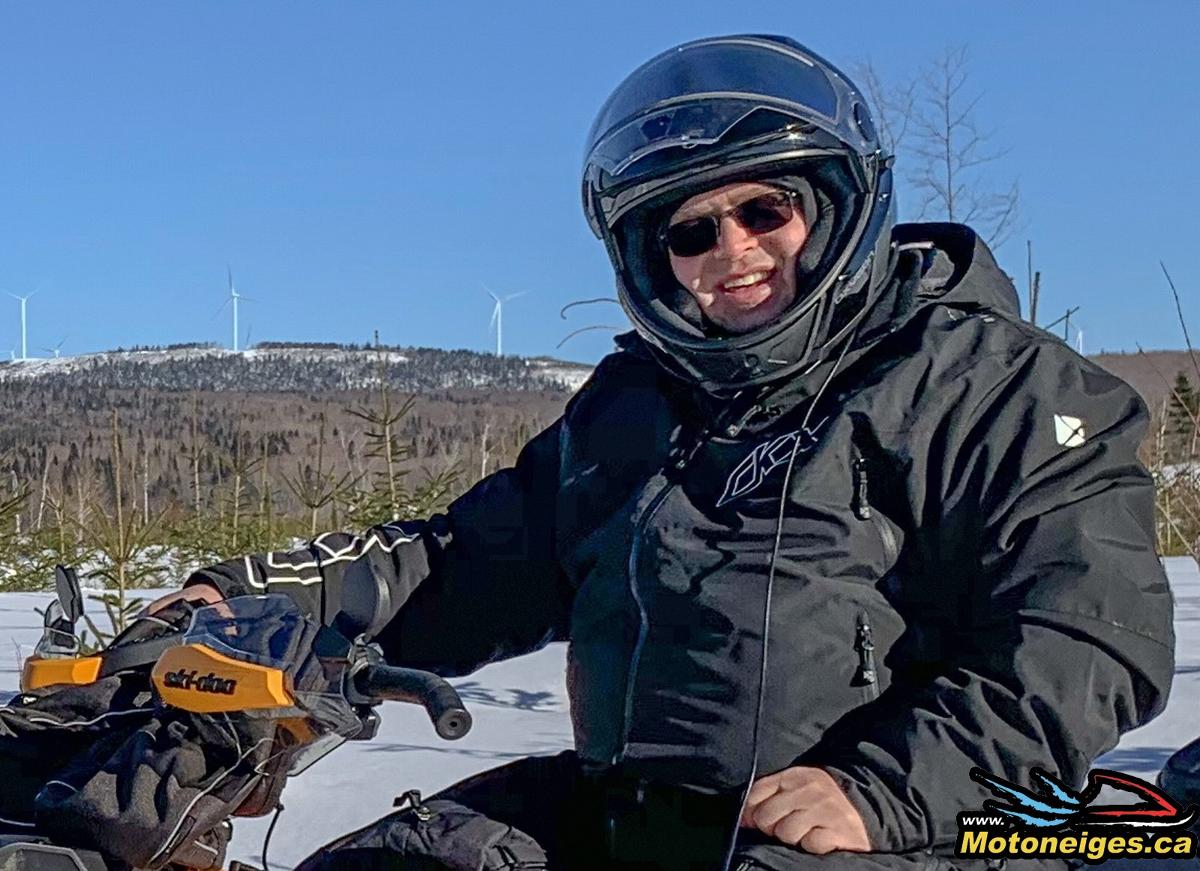Table of contents
Toggle
In the spring of 2018, the manufacturer announced the introduction of the Oxygen helmet. By its characteristics, it revolutionized the snowmobile world in a way that the BV2S had done before.
The enthusiasm for this helmet has been such that it became almost impossible to find early last season. Indeed, the product was out of stock.
Some people had problems right from the beginning of the season last year. It seems that the cause of the problem was the overtight packaging that deformed parts of the helmet. Naturally, Ski-Doo sent the spare parts to the people concerned.
I have not experienced this problem.
Helmet characteristics
Clement Boutin, my colleague, wrote an excellent article describing all the features of this helmet. I will refer you to this article (Read…) and focus on my test.
My Observations
As soon as you wear the helmet, you are impressed by the width and height of the vision. Indeed, the visor is wide, so we can use our peripheral vision instead of always needing to turn our heads to see to the sides. The visor also goes down very low, which allows us to see the gauges of our snowmobile without lowering our head.
The second thing I immediately noticed was the soundproofing that this helmet provides when the ear cushions are in place. The expression “to be in your bubble” really makes sense since the vast majority of sounds are inaudible, and the others are a lot reduced. It often causes me some problems when I ride with friends during our stops. I’ve made it a habit to remove my helmet for breaks of more than two minutes.
The helmet is very comfortable and surprisingly warm. In many circumstances, I wear it without a balaclava. Moreover, there are no air deflectors, or other parts in our face. It gives a feeling of freedom.
As the helmet has a heated visor, it stays clear of fog or frost when driving. After a stop, it may have a little, but in no time, everything is gone.

Solar visor
Those who have driven a little with helmets equipped with solar visors have all experienced this situation… We have been driving for quite some time in freezing weather, and suddenly we are turning, and the sun is right in front of us. We put the sun visor down, and it’s full of frost. Not only is this annoying, but it could also be dangerous.
On the Ski-Doo Oxygen helmet, there is no need to worry because the storage of the sun visor is heated… Yes, yes, heated! As a result, it remains frost-free and is ready to be used if necessary.
This small garage for the solar visor is heated, so is the inside of the helmet. It is not a significant source of heat, but it is interesting to see the difference it can make to the comfort of the helmet. It also explains that I can wear it without balaclava most of the time.
Airtight
Earlier, I was referring to soundproofing, but the helmet is also very airtight when the visor is fully closed. No air infiltration is felt or heard. It is probably the most airtight helmet I have ever had the opportunity to try. It is so airtight that in the spring, I slightly open the visor to let in fresh air.
Perfect for those who wear prescription glasses … well, almost
Last year, with the Oxygen helmet, I was able to wear my prescription glasses for the entire season.
I must say that it is the only helmet on the market and that I had the opportunity to try, that made it possible for me to wear my glasses effectively all season long. But I had to develop a few little tricks to do it.
There are indeed some principles of physics that cannot be bypassed. Let me explain… When the helmet visor is open, the lenses of your glasses are exposed to the cold. So, if it is -25 C, and you talk with your friends a few minutes before you go, the temperature of the glasses will be about the same as the temperature of the outside air. When you close the visor, the moisture of your body (head) and breath will freeze or change to liquid when it touches your glasses, creating fog or frost. The same principle applies when our glasses fog up when you enter a heated building in winter.
When I would leave after a stop, I would leave the visor open and gradually close it as I drove. This avoided, or at least minimized, the frost on my glasses.
I couldn’t put the visor in the closed position, because in cold weather, some fog would eventually form. On the other hand, I was able to put the visor down but not closed, which did not cause any noticeable air infiltration.
If you ask me the question: is it perfect? I would say no, but I would also say that it’s excellent. Of all the ones I have tried so far, it is the best helmet for those who wear glasses.
Its only flaw, I think, is that it must always be plugged in when you use it.

In conclusion
If you are a snowmobiler who is looking for an excellent helmet for its features and performance, I invite you to consider the Oxygen helmet from Ski-Doo.
For those who wear prescription glasses, I let you judge for yourself based on my observations. You’ll have a tough time taking it off because it’s the helmet I like best when I wear my glasses!
Thanks to Ski-Doo for making this test possible


